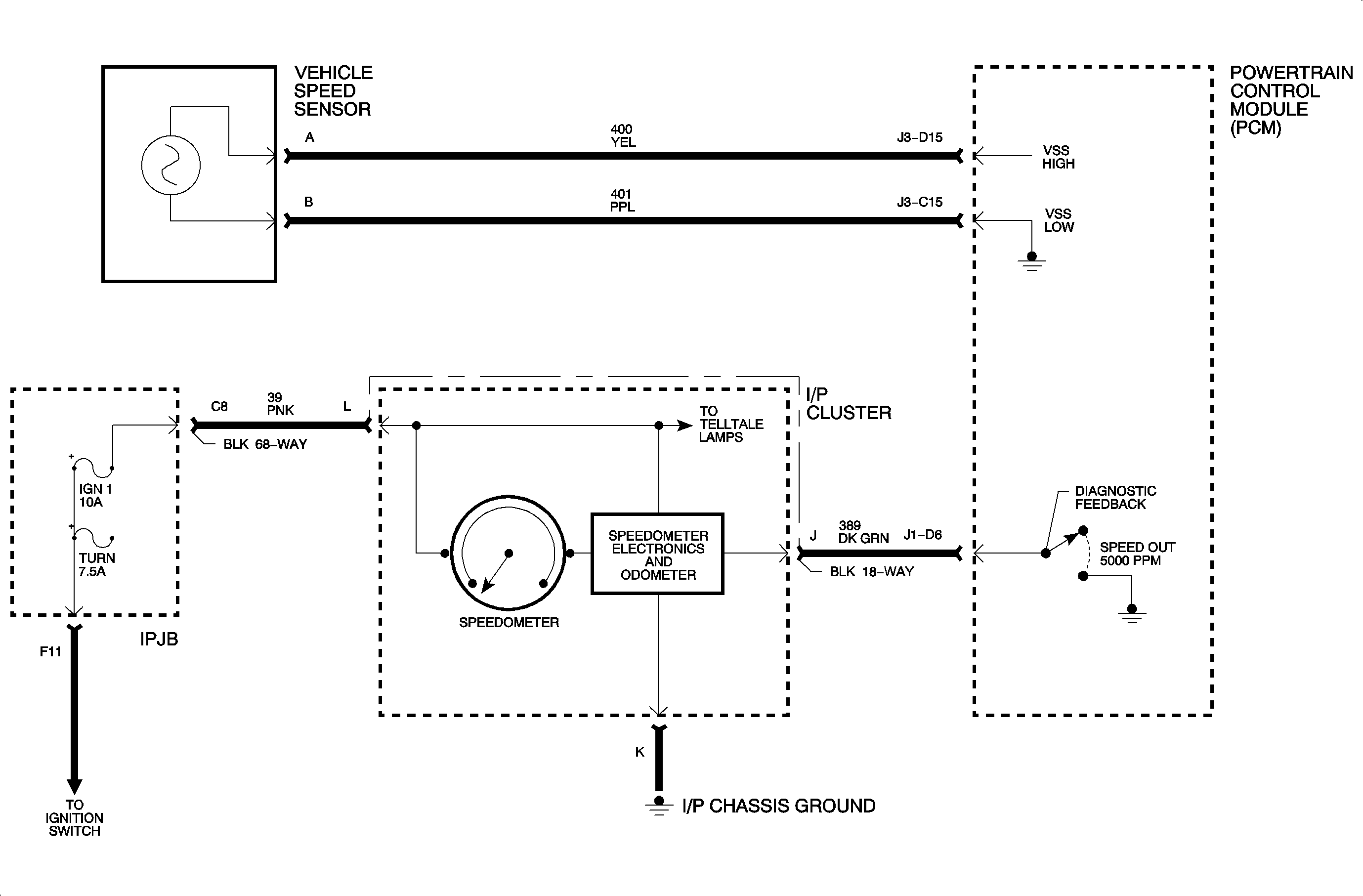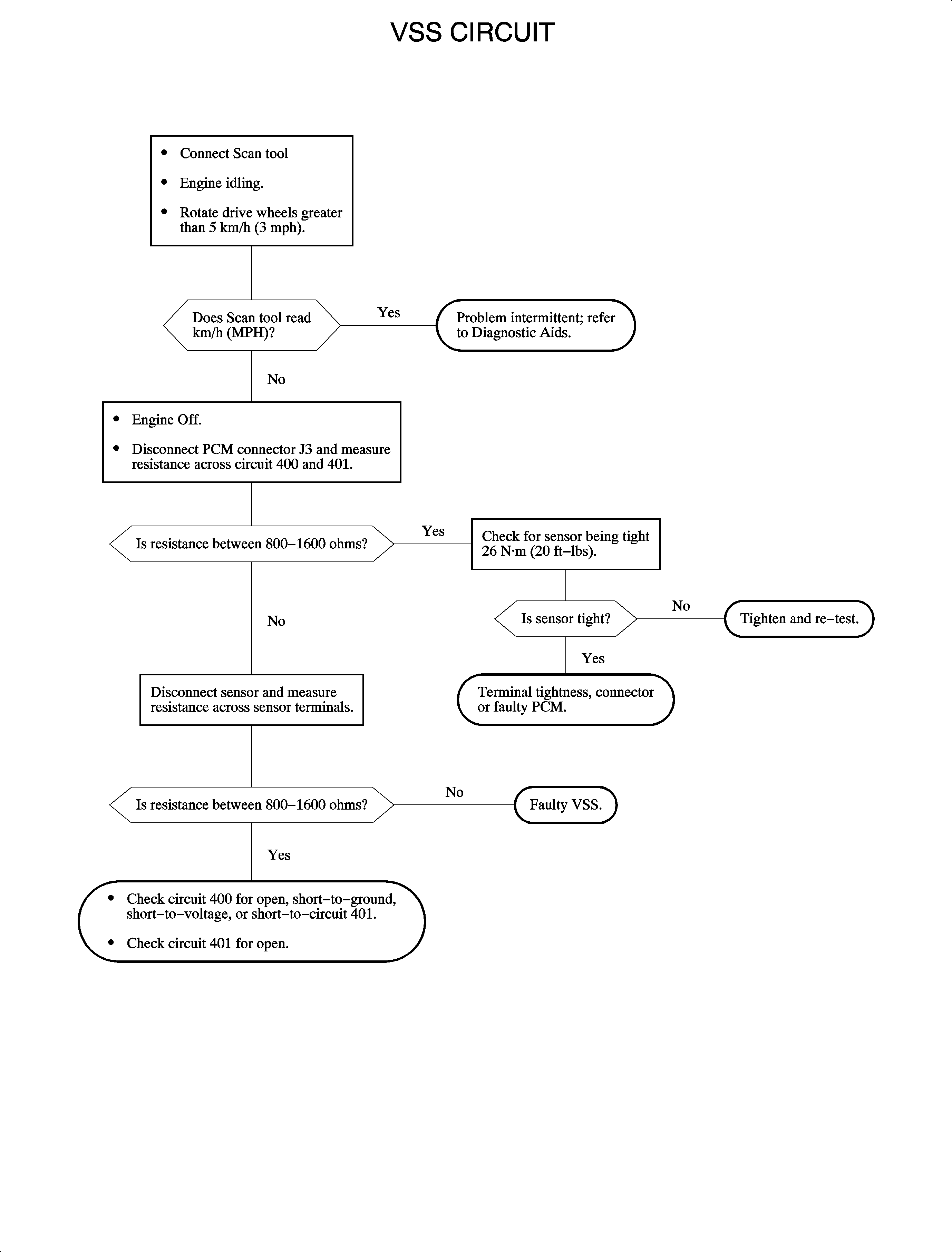Circuit Description

Vehicle speed values are provided by the vehicle speed sensor (VSS). The sensor
is a permanent magnet variable reluctance sensor (VRS) mounted on the differential
area of the transaxle housing. The PM generator produces a pulsing voltage whenever
the vehicle speed is above 5 km/h (3 mph). These pulses occur 16 times
per each revolution of the differential housing and are translated to provide the
vehicle speed in miles per hour.
Conditions for Setting the DTC
DTC P0500 will set if there is no VSS signal when:
| • | The engine speed is between 1400-4000 RPM. The MAP sensor
indication is less than 0.5 volts, less than 23 kPa (3 psi) for
greater than 5 seconds. |
| • | The vehicle is not in park/neutral, with an automatic transaxle. |
Important: The VSS signal is continuously checked once
the above conditions are met. If the VSS signal is missing the speedometer will be
inoperative.
Diagnostic Aids
When attempting to diagnose an intermittent problem, use the scan tool to review
the malfunction history diagnostic information. The supplemental data can be used
to duplicate a problem.
Intermittents or opens suspected to be at the connector can be detected by using
a diagnostic service probe. Voltage can be read on wires without disconnecting any
connectors.
Check the tightness of the female terminal grip with a spare male terminal.
| • | The speedometer will not work if the VSS subsystem has failed. |
| • | If the VSS reading is accurate and the speedometer is incorrect, refer
to Audio Systems and I/P Cluster service manual. |
| • | The VSS resistance = 800-1600 ohms. |
| • | If the problem is intermittent, wiggle the wires while monitoring the
VSS signal on the scan tool and watch for the signal to jump for loss of signal. |
| • | The PCM will calculate the VSS based on RPM and TP sensor signal if DTC P0500
is set, but the speedometer will remain inoperative. |



